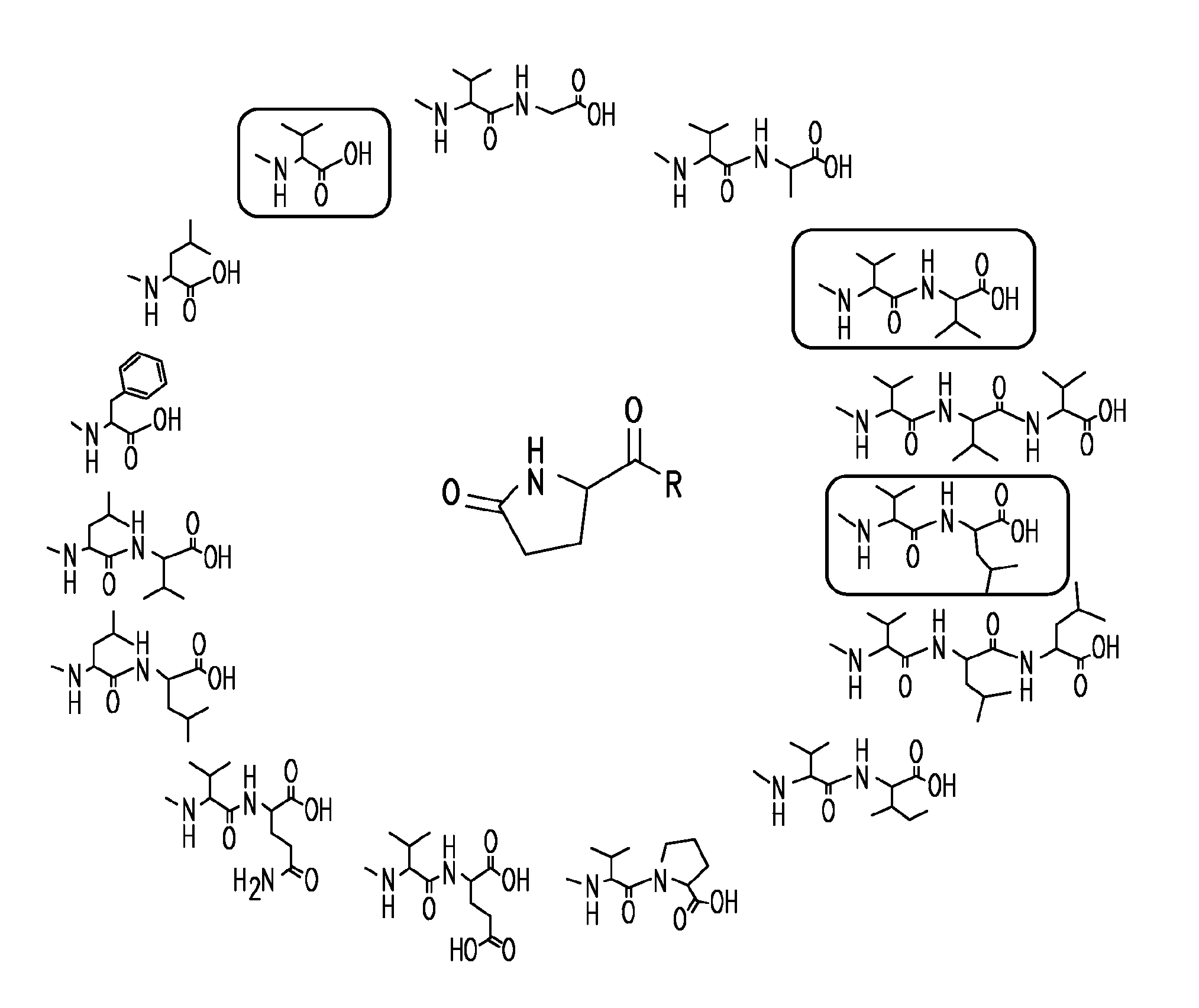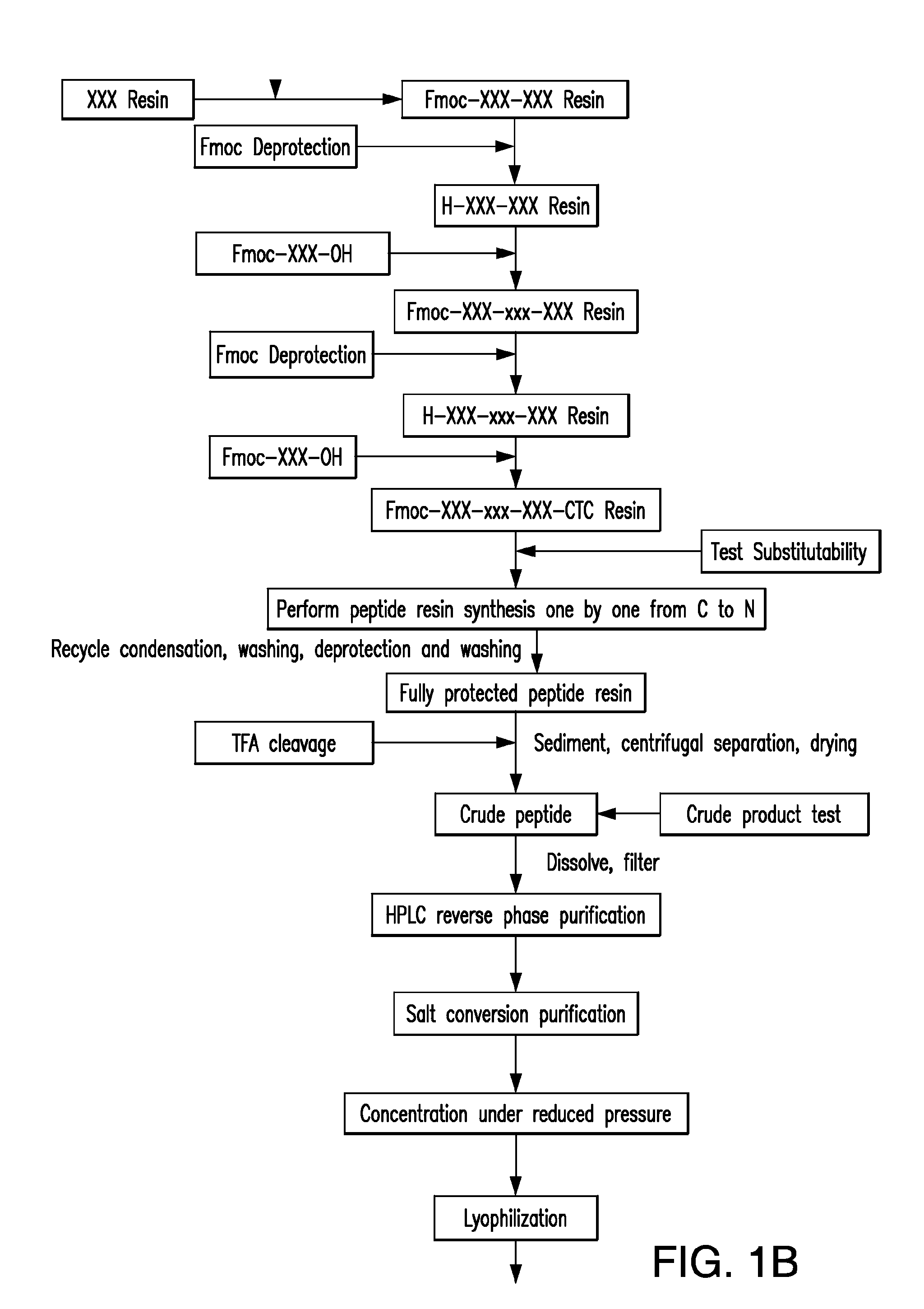Flavor composition and edible compositions containing same
a technology of flavor composition and composition, applied in the field of peptides and flavor compositions, to achieve the effect of modulating, enhancing or reducing the taste modulating, enhancing or reducing the flavor and modulating, enhancing or reducing the texture profile of an edible composition
- Summary
- Abstract
- Description
- Claims
- Application Information
AI Technical Summary
Benefits of technology
Problems solved by technology
Method used
Image
Examples
example 1
Preparation of a Peptide Composition by Hydrolysis
[0318]The present example described the preparation of peptide for use in a flavor composition through the hydrolysis cocoa bean liquor made from West African cocoa beans.
[0319]Reagents: A solution of 4N HCl was prepared by adding 100 mL 34-37% HCl in a 250 mL volumetric flask and filling it with water. A solution of 4N NaOH was prepared by dissolving 80 g NaOH pellets in 500 mL of water in a volumetric flask.
[0320]Method: Cocoa liquor was run through a sieve and 30.09 g of fine powder was weighed into a 500 mL 3-neck round-bottom flask. The liquor was dissolved in 4N HCl (200 mL) and a stir bar was added to the flask. The sample was stirred at room temperature until the liquor was fully dispersed and flowed freely. A condenser was affixed to the flask and held at 8° C. A digital thermometer was pierced through a rubber stopper to measure the temperature of the solution. The third neck was plugged with a rubber stopper. The flask was...
example 1a
Preparation of a Peptide Composition by Extraction and Fractionation of a Cocoa Liquor Hydrolysate
[0321]1. Hydrolysis of Cocoa Powder[0322]Preparation: A solution of 4N HCl was prepared by adding 100 mL 34-37% HCl in a 250 mL volumetric flask and filling it to the line with water. A solution of 4N NaOH was prepared by dissolving 80 g NaOH pellets in 500 mL of water in a volumetric flask.[0323]Procedure: Cocoa liquor made from West African cocoa beans was run through a sieve and 30.09 g of fine powder was weighed into a 500 mL 3-neck round-bottom flask. The liquor was dissolved in 4N HCl (200 mL) and a stir bar was added to the flask. The sample was stirred at room temperature until the liquor was fully dispersed and flowed freely. A condenser was affixed to the flask and held at 8° C. A digital thermometer was pierced through a rubber stopper to measure the temperature of the solution. The third neck was plugged with a rubber stopper. The flask was wrapped in aluminum foil and heate...
example 1b
Preparation of a Peptide Composition by Extraction and Fractionation of Cocoa Liquor
[0328]1. Liquid / Solid Extraction of Liquor
[0329]Cocoa Liquor made from cocoa beans sourced from Papua New Guinea (PNG liquor) (600 g) was frozen in liquid nitrogen and ground into a fine powder with a laboratory mill. The powder was divided equally into six plastic centrifuge tubes (500 mL volume). Each sample (100 g PNG liquor) was extracted with diethyl ether (200 mL) for 15 minutes using an autoshaker to remove the fat. After centrifugation (10 min, 4500 rpm), the supernatant was discarded. The extraction process was repeated three more times for a total of four times. The remaining defatted liquor was left to air dry in a fume hood overnight. Defatted liquor (200 g) was divided equally between four plastic centrifuge bottles (250 mL volume). To each sample (50 g defatted PNG liquor), 150 mL 70:30 acetone:water was added. The bottles were placed on an autoshaker for 15 minutes. Each sample was cen...
PUM
 Login to View More
Login to View More Abstract
Description
Claims
Application Information
 Login to View More
Login to View More - R&D
- Intellectual Property
- Life Sciences
- Materials
- Tech Scout
- Unparalleled Data Quality
- Higher Quality Content
- 60% Fewer Hallucinations
Browse by: Latest US Patents, China's latest patents, Technical Efficacy Thesaurus, Application Domain, Technology Topic, Popular Technical Reports.
© 2025 PatSnap. All rights reserved.Legal|Privacy policy|Modern Slavery Act Transparency Statement|Sitemap|About US| Contact US: help@patsnap.com



